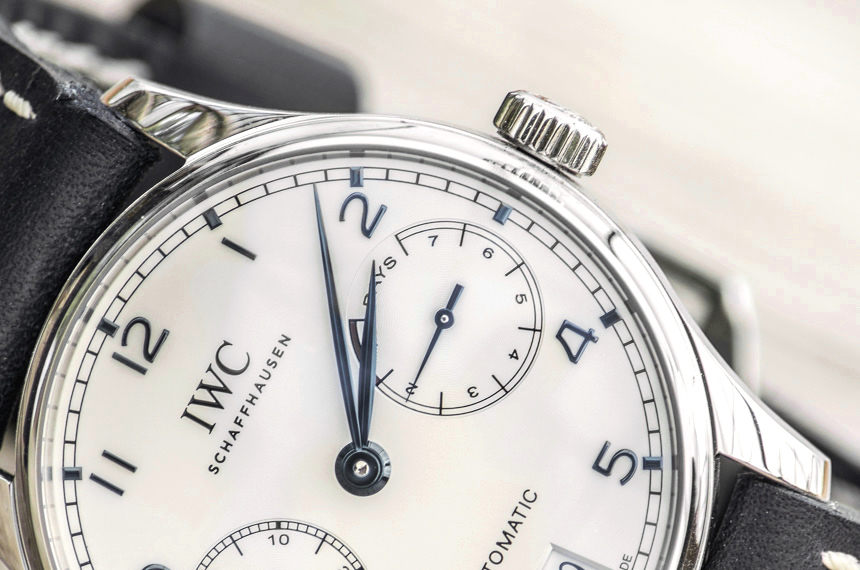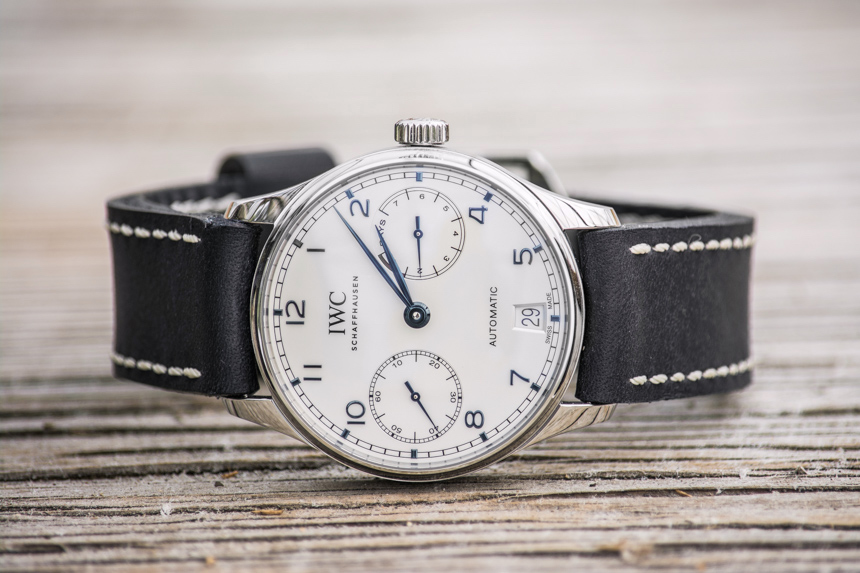 Review by aBlogtoWatch reader and guest contributor Paul Piazza who purchased the IWC Portugieser Automatic Ref. IW500705 and was kind enough to share his experiences and thoughts on the watch.
Review by aBlogtoWatch reader and guest contributor Paul Piazza who purchased the IWC Portugieser Automatic Ref. IW500705 and was kind enough to share his experiences and thoughts on the watch.
The IWC Portugieser Automatic with date display debuted back in 2004 and has always been furnished with one of the biggest and most powerful automatic movements. The 52010 caliber as we know it today shows how far movement architecture has come since the original Portugieser from the 1930s used a pocket watch movement in its wristwatch case. In this review we’ll look at both this gargantuan 52010 caliber and the dressy-elegant case that encapsulates it.
Going back a little bit, IWC renamed the then-Portuguese line as the Portugieser in 2015 and updated the outgoing model with this, the IWC Portugieser ref. IW5007. Again, the watch’s actual origin dates back to the late 1930s when two professionals known as Rodrigues and Teixeira approached IWC seeking a sizable stainless steel timepiece with a movement that could compete accuracy-wise with a marine chronometer. The IWC Portugieser is a prosperous line, as the Portugieser itself is over 75 years old, and the adoration and loyalty to the automatic version quite possibly triumph’s its well-respected chronograph counterpart.
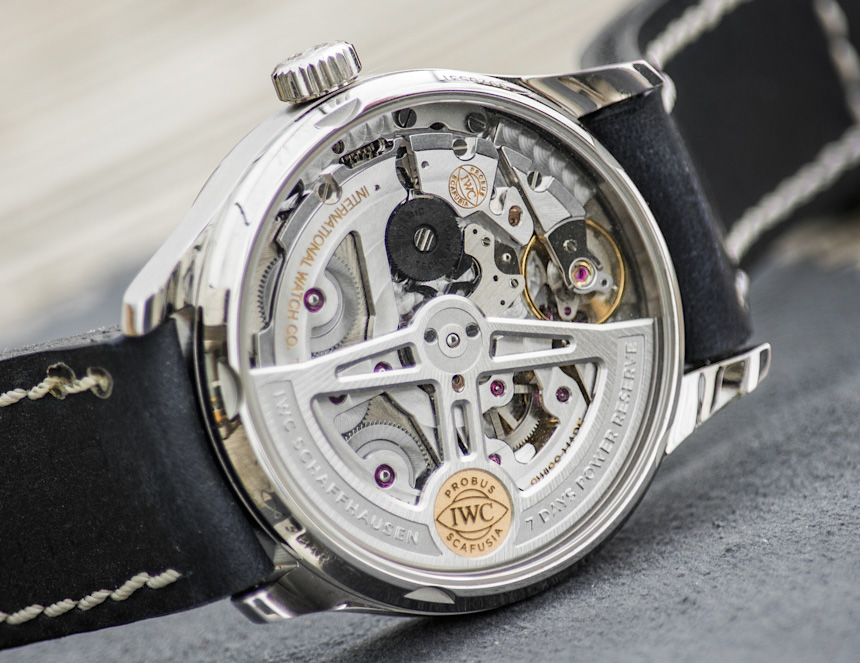
Updated on the IWC Portugieser Automatic IW5007’s 31-jeweled and decorated movement is the self-winding mechanism: it is a pretty much wear-free system thanks to its use of ceramic parts. There are many exciting changes in comparison to the last 5001 iteration, and most of these changes really happen with the more open architecture, skeletonized rotor, how the watch winds, the layout of the bridges – and now you can both see and really feel how smooth the Pellaton automatic winding system is.
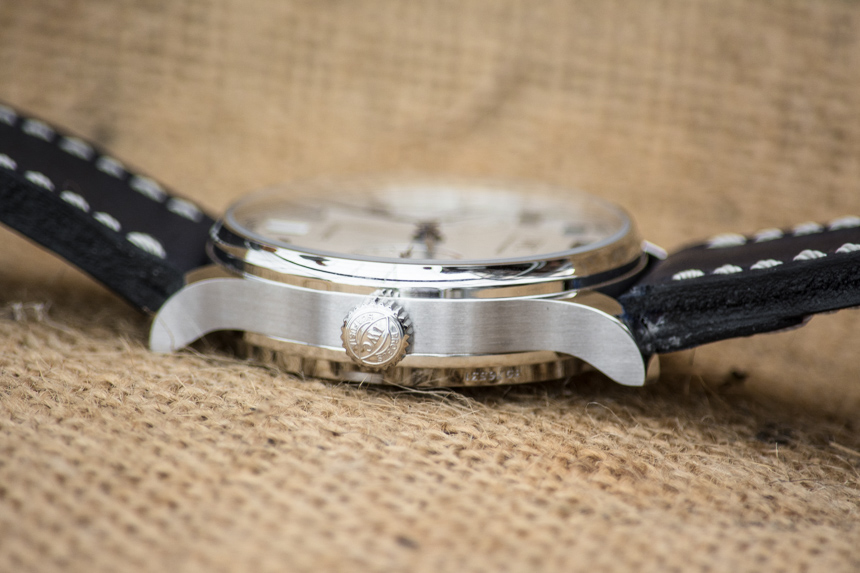
There’s a lot of space revealing the barrel bridge which, of course, displays the two mainspring barrels in all of their glory. The two barrels benefit the torque release, and it makes a big difference considering the natural leap from the 5001’s 3Hz to the IW5007’s more modern 4Hz frequency – which, in turn, makes the 52010 caliber to now have to store more energy to still offer the 7-day power reserve along with the increased frequency.
The bidirectional winding has improved over the 5001 with the addition of two black ceramic pawls. Think of them like two ceramic black wings as one will start to release while the other basically pulls, operating with no need for lubrication. This negates concern for wear or any unforeseen weaknesses because, as prone to cracking upon impact ceramic may be, it is unlikely anything will hit these parts that are safely tucked away under the massive sapphire case-back.
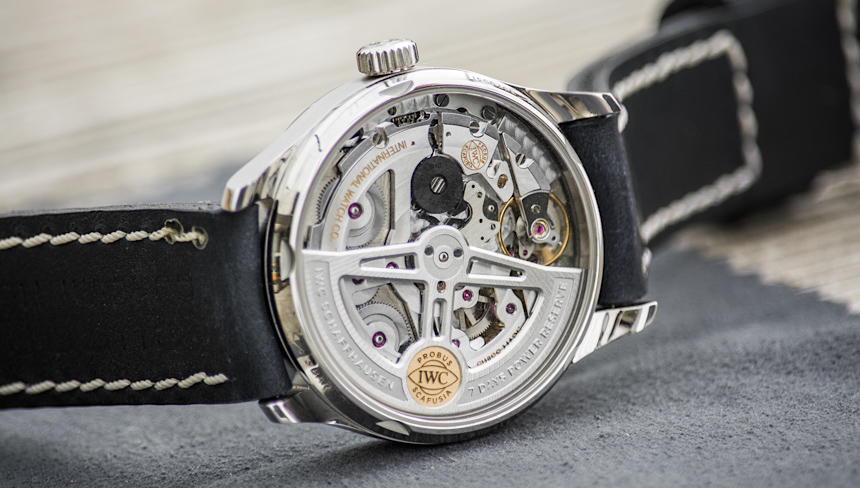
Also featured in the 52010 movement is IWC’s sturdy free sprung escapement, so the rate should stay more consistent, something further improved with a Breguet over-coil hairspring. The Breguet spring, through its elasticity, regulates the oscillations of the balance. It was first invented by a Dutch mathematician named Huygens in 1675. In 1795 Abraham-Louis Breguet solved many of the isochronism problems of the Huygens-invented hairspring by raising the spring’s last coil to reduce its curvature and establish the concentric development of the balance spring – resulting in the balance staff wearing out less quickly while upgrading precision at the same time. Needless to say, it is not exclusive neither to Breguet, nor to IWC, but remains a neat little detail us watch-enthusiasts can appreciate.
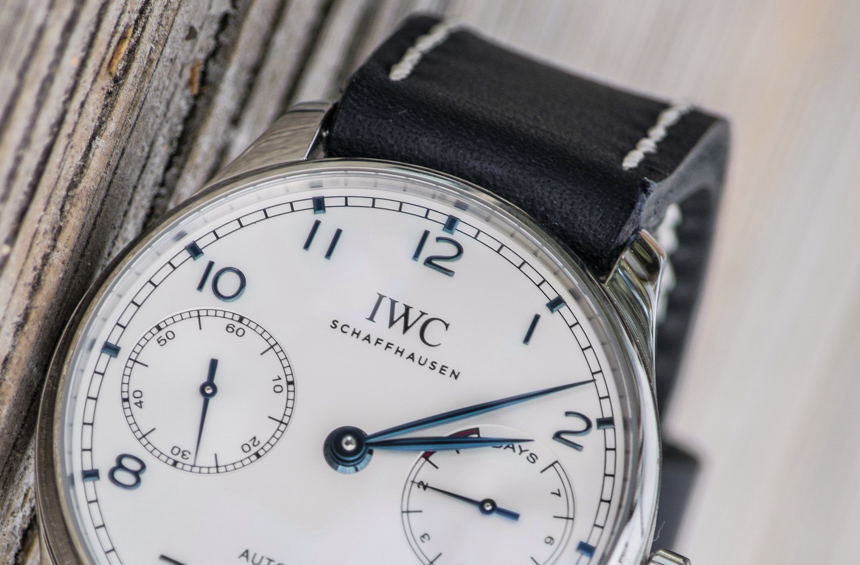
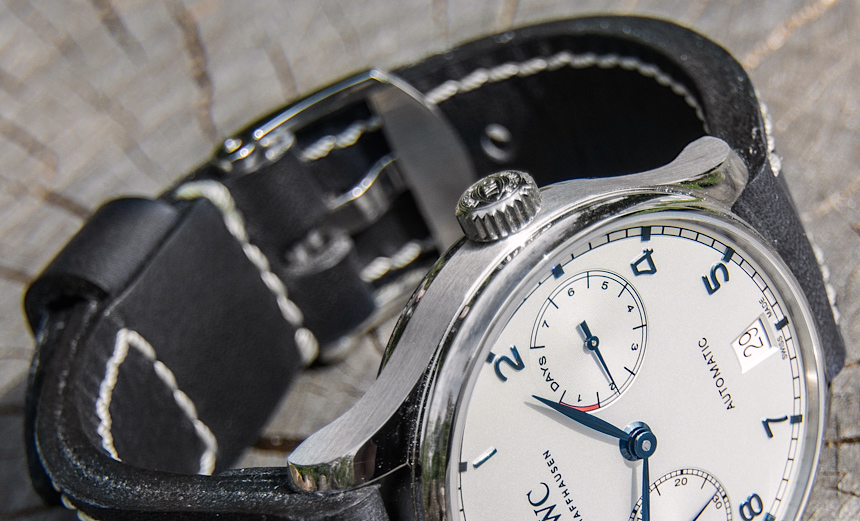
As subjective as watch design is, I feel safe in saying that when one gazes upon the IWC Portugieser Automatic IW500705’s dial, there’s just something appropriately satisfying to the eye. It could be thanks to the polished, blued, hand-applied Arabic numerals and index markers that gently float atop a beautiful silvery white dial, or perhaps the slender and timeless feuille hands that provide excellent legibility – though not so much on the black-dial version. Color-matched silver sub-dials peer back at you with their concentric circular texture pattern, with small seconds on the left and the power reserve indicator on the right. The latter offers that lovely red touch, bringing a dash of warmth into the cold white-blue picture.
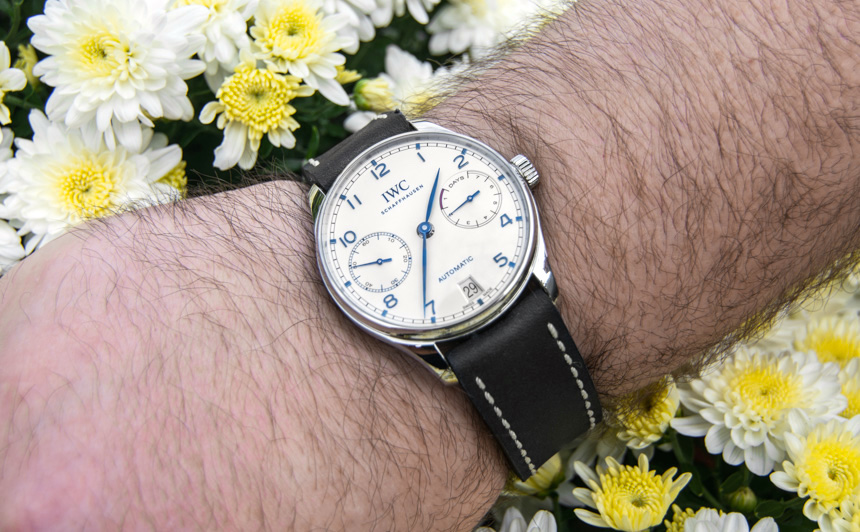
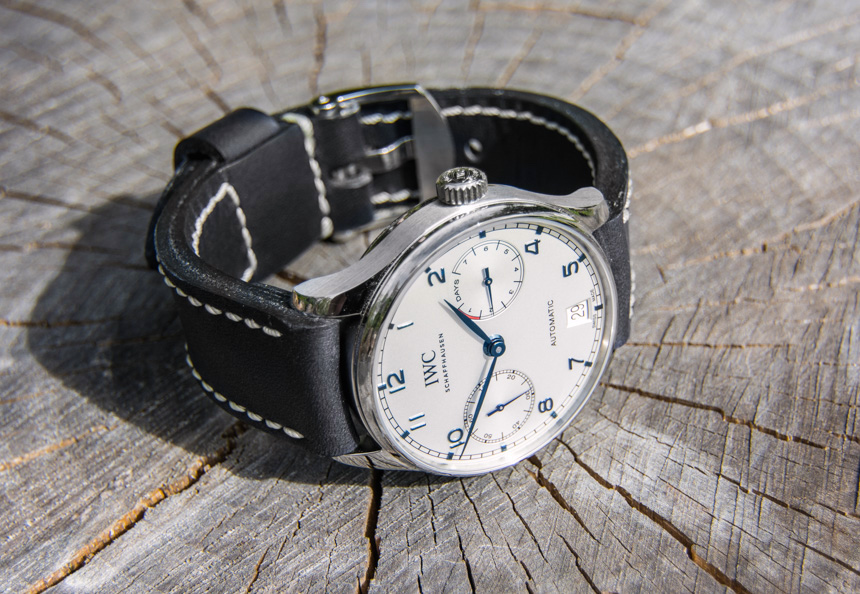
I’ve worn the IWC Portugieser Automatic IW500705 on a full wind for 5 days and kept it face up overnight in my watch box. It’s been accurate to +3 seconds per day, though IWC has told me the 52010 caliber is regulated in Schaffhausen to -7/+7 seconds per day – which falls out of COSC chronometer certifications, something that may be difficult to achieve at the end of such a long power reserve, but would be nice to see attained in the future. There is plenty of dial space on the IWC Portugieser Automatic IW5007, and it’s a welcoming appeal to say the least for the wearer. I really enjoy looking at the railway track-styled chapter ring as I humbly think it looks best on this model in particular.
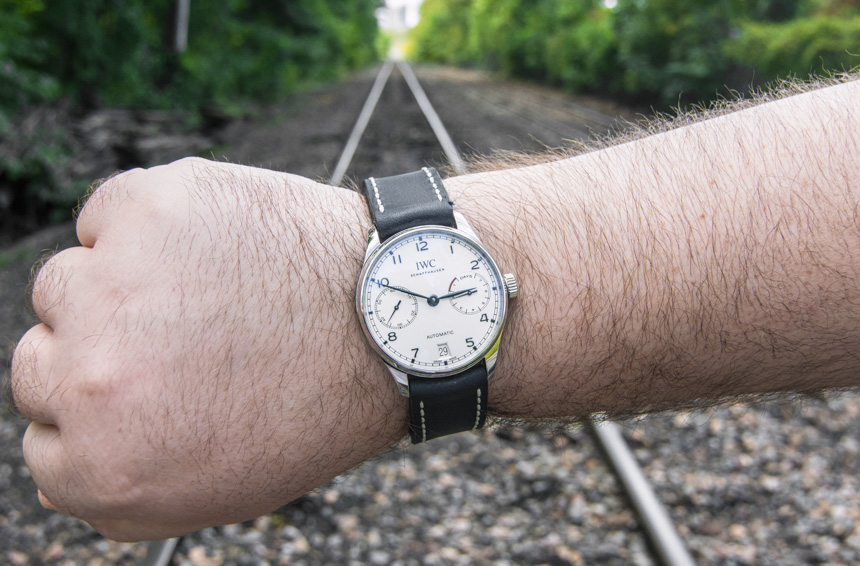
Despite its generous 42.3mm case and large dial space,IWC Portugieser Automatic IW5007 maintains its dressy-elegant looks. Notably, the IW5007 also became a bit thicker since the last update, inflating to 14.5mm in total thickness, compared to the original at 13.9mm thick. IWC has closed the space between the lugs and strap, as well as reduced the length of the lugs slightly all the while making them more burly. I think it’s truly hard to update such an established design and that’s another thing I personally found amazing about the IW5007: in my experience, it has the ability to be worn anytime, from formal to casual.

Speaking of casual, that was my initial goal, so I took the wonderfully done 22mm black alligator leather strap and swapped it for a dark navy steerhide leather with off-white full stitch from Europelli straps. I’m a big guy with 8 1/2″ wrists, so before I purchased the watch I was concerned that 42.3mm would be too small, as my “sweet spot” in any timepiece genre lies between 44-45mm. Well, while it might seem large for small-wristed collectors, it was a solid fit for my larger wrist.
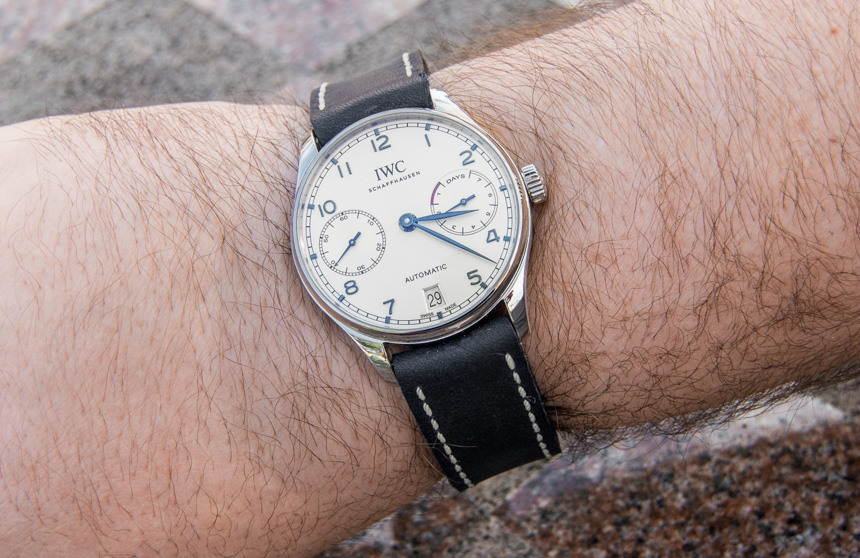
The IWC Portugieser Automatic IW5007 also has a convex, dual-antireflective-coated sapphire crystal, as well as a sapphire crystal on the case-back. The decoration of the lugs, bezel, and case-back consist of polished surfaces with the sides of the case done in a finely satin-finished look. Curved lugs and curved spring bars really make it a more streamlined look as the strap meets the case much more effectively, making for a more integrated look when compared to the 5001.
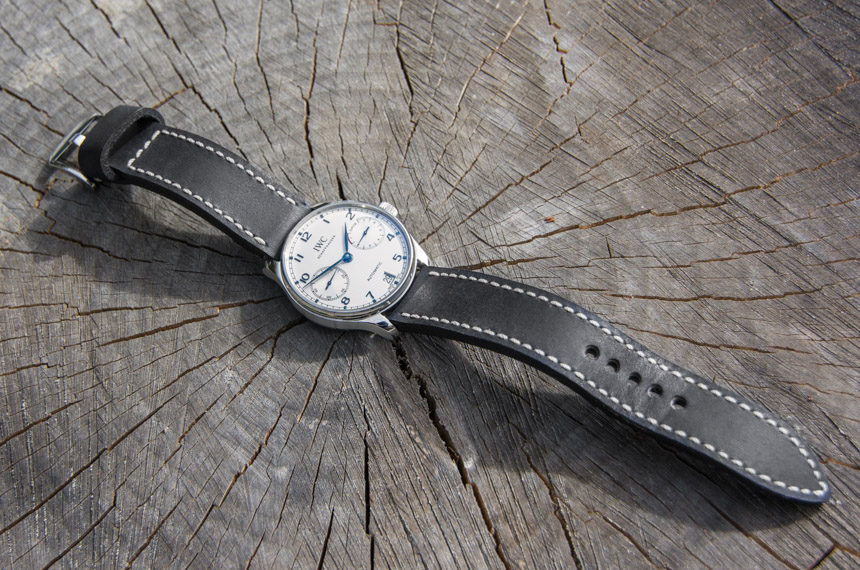
In conclusion, for all these reasons above, the IWC Portugieser Automatic IW500705 I would recommend to purists and enthusiasts. From the welcoming dial and heat-blued applied touches to the amazing updated 52010 caliber, this IWC Portugieser Automatic can easily handle many environments and settings. Whether hanging out with friends casually or a true formal event, it can morph itself to fit your daily needs.
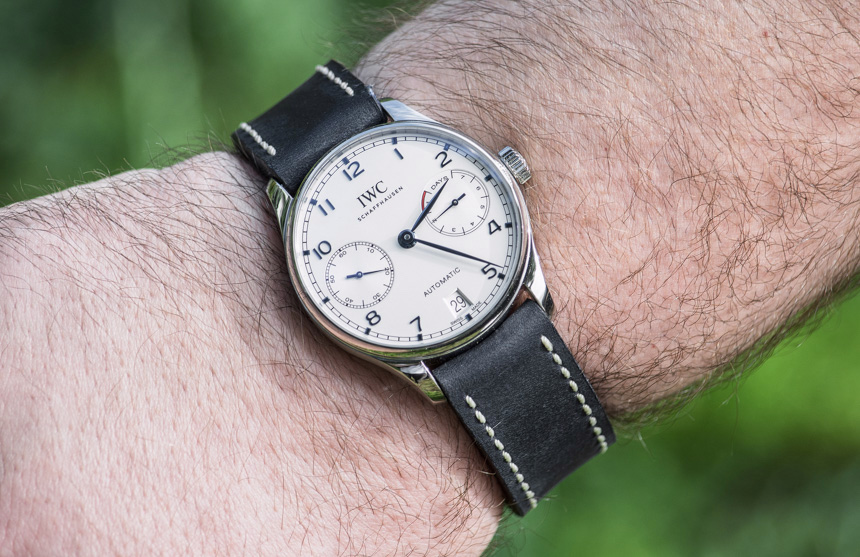
IWC has not only improved the movement, but in an effort to give its staunch fans a more competitive price point, IWC has a lower retail price on the IW5007 than its previous 5001. The IWC Portugieser Automatic IW500705 retails for $12,700 USD. iwc.com

